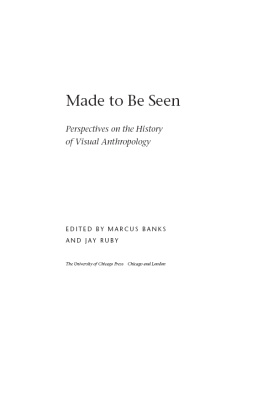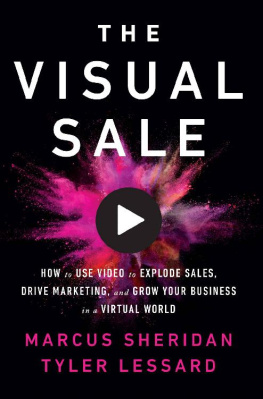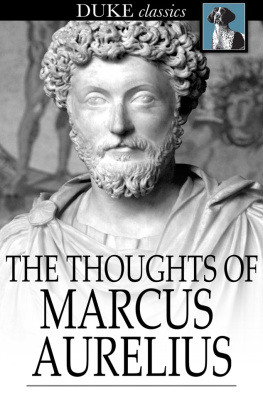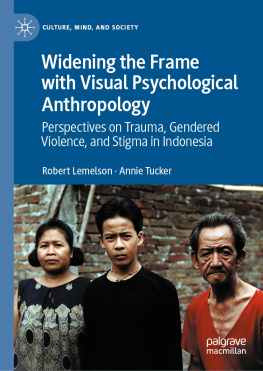Marcus Banks - Made to Be Seen: Perspectives on the History of Visual Anthropology
Here you can read online Marcus Banks - Made to Be Seen: Perspectives on the History of Visual Anthropology full text of the book (entire story) in english for free. Download pdf and epub, get meaning, cover and reviews about this ebook. year: 2011, publisher: The University of Chicago Press, genre: Romance novel. Description of the work, (preface) as well as reviews are available. Best literature library LitArk.com created for fans of good reading and offers a wide selection of genres:
Romance novel
Science fiction
Adventure
Detective
Science
History
Home and family
Prose
Art
Politics
Computer
Non-fiction
Religion
Business
Children
Humor
Choose a favorite category and find really read worthwhile books. Enjoy immersion in the world of imagination, feel the emotions of the characters or learn something new for yourself, make an fascinating discovery.
- Book:Made to Be Seen: Perspectives on the History of Visual Anthropology
- Author:
- Publisher:The University of Chicago Press
- Genre:
- Year:2011
- Rating:5 / 5
- Favourites:Add to favourites
- Your mark:
- 100
- 1
- 2
- 3
- 4
- 5
Made to Be Seen: Perspectives on the History of Visual Anthropology: summary, description and annotation
We offer to read an annotation, description, summary or preface (depends on what the author of the book "Made to Be Seen: Perspectives on the History of Visual Anthropology" wrote himself). If you haven't found the necessary information about the book — write in the comments, we will try to find it.
Marcus Banks: author's other books
Who wrote Made to Be Seen: Perspectives on the History of Visual Anthropology? Find out the surname, the name of the author of the book and a list of all author's works by series.
Made to Be Seen: Perspectives on the History of Visual Anthropology — read online for free the complete book (whole text) full work
Below is the text of the book, divided by pages. System saving the place of the last page read, allows you to conveniently read the book "Made to Be Seen: Perspectives on the History of Visual Anthropology" online for free, without having to search again every time where you left off. Put a bookmark, and you can go to the page where you finished reading at any time.
Font size:
Interval:
Bookmark:
Made to Be Seen
Perspectives on the History of Visual Anthropology
EDITED BY MARCUS BANKS AND JAY RUBY
The University of Chicago Press Chicago and London
MARCUS BANKS is professor of visual anthropology at the University of Oxford and the author, most recently, of Using Visual Data in Qualitative Research. JAY RUBY is professor emeritus of anthropology at Temple University and the author or editor of numerous books, including Picturing Culture: Essays on Film and Anthropology, also published by the University of Chicago Press.
The University of Chicago Press, Chicago 60637
The University of Chicago Press, Ltd., London
2011 by The University of Chicago
All rights reserved. Published 2011
Printed in the United States of America
20 19 18 17 16 15 14 13 12 11 1 2 3 4 5
ISBN-13: 978-0-226-03661-8 (cloth)
ISBN-13: 978-0-226-03662-5 (paper)
ISBN-10: 0-226-03661-8 (cloth)
ISBN-10: 0-226-03662-6 (paper)
ISBN-13: 978-0-226-03663-2 (e-book)
Library of Congress Cataloging-in-Publication Data
Made to be seen : perspectives on the history of visual anthropology / edited by Marcus Banks and Jay Ruby.
p. cm.
Includes bibliographical references and index.
ISBN-13: 978-0-226-03661-8 (alk. paper)
ISBN-10: 0-226-03661-8 (alk. paper)
ISBN-13: 978-0-226-03662-5 (pbk. : alk. paper)
ISBN-10: 0-226-03662-6 (pbk. : alk. paper)
1. Visual anthropology. I. Banks, Marcus. II. Ruby, Jay.
GN347.M33 2011
301dc22 2010048748
 The paper used in this publication meets the minimum requirements of the American National Standard for Information Sciences
The paper used in this publication meets the minimum requirements of the American National Standard for Information Sciences
Permanence of Paper for Printed Library Materials, ANSI Z39.48-1992.
Contents
MARCUS BANKS AND JAY RUBY
CRISTINA GRASSENI
SANDRA DUDLEY
ROXANA WATERSON
ARND SCHNEIDER
BRENDA FARNELL
ELIZABETH EDWARDS
MATTHEW DURINGTON AND JAY RUBY
SARAH PINK
FAYE GINSBURG
KATHRYN RAMEY
STEPHEN PUTNAM HUGHES
MICHAEL HERZFELD
I NTRODUCTION
Made to Be Seen: Historical Perspectives on Visual Anthropology
MARCUS BANKS AND JAY RUBY
History, Anthropology, and the History of Visual Anthropology
In Britain, the United States, and elsewhere in the Euro-American world the discipline of anthropologyin its broadest senseis at least a century and half old. How much more or less is a matter of debate that need not concern us here, though we draw the line at claiming that Herodotus was an anthropologist or that Edward Curtis or the Lumire brothers were anthropological image creators. For the purposes of this volume we limit ourselves to the anthropological endeavors of those who recognized the contemporary anthropological project and the image-making activities of those who understood that project or were in other ways engaged with it. Even with this limitation (indeed, because of it), there remains the question of whether there is in fact a distinct history of visual anthropology that can be untwined from the history of the discipline as a whole. Below we demonstrate that such a history is not only possible but a worthwhile venture, but at the same time we acknowledge that those traces that historians of the subdiscipline have previously seized uponthe Balinese films and photographs of Mead and Bateson, the West African films of Jean Rouchexist only because those individuals were already conducting field research relevant to the production of the images or were engaged in anthropological analyses for which image analysis was a part, but only a part. While there is, in that sense, a visual strand, or strands, to be teased out, we and our contributors never lose sight of the fact that all anthropologists work on a variety of fronts and that anthropology is distinctive as a discipline precisely because of its ambition to produce holistic accounts, albeit with primary and secondary foci. A linguistic anthropologist, a political anthropologist, an anthropologist of globalization canand doincorporate visual data and visual methods into their studies while contributing to their respective subfields. Authors in this volume note, for example, that the production and consumption of images plays only a part in the history of anthropological approaches to dress and textiles (Dudley) and to the built environment (Waterson). Even with regard to the anthropological uses of photography, Edwards notes that in many ways work on photography is becoming more diffuse and dispersed across the anthropological field, no longer confined within visual anthropology. Our joint aim in this volume is therefore to give an account of the visual as it passes in and out of the discipline of anthropology.
As editors, we encouraged our contributors to reflect on the role of the visual within distinct fields of anthropological inquiry. Some of these fields are constitutive of what is generally thought to be the particular subject matter of visual anthropology (film, photography), while others (materiality, embodiment, the use of technology) make such use of the visual, or share common methodologies and approaches to such an extent, that they are often considered within the same ambit or that it would be intellectually hobbling to exclude them. This history is not a narrative of great men and their movies or photographs. It is rather a history of ideas and interests within the discipline that at some times have cried out for visual exploration (whether that call was heeded or not) and at others have apparently spurned the visual in favor of the written word as a mode of representation and language as an access route to the mind.
Perhaps the most closely examined period in this volume is those few decades before long-term field research became common, a time when the study of art and material culture was thought to yield evidence of cultural evolution (e.g., Haddon 1895). At this time, roughly between the 1880s and the 1920s, photography was vital as a form of evidence that could be circulated among ethnologists anxious to receive as much information about as many primitive groups as possiblefar more than they could ever hope to gather firsthand (Edwards 2001, chap. 2). The development of long-term fieldwork, with its Malinowskian emphasis on the imponderabilia of everyday life, and the subsequent rise of interest in the comparative study of abstract institutions such as kinship, the economy, and so forth led to a setting aside of material culture studies for many decades. This, together with the costs and difficulties of publishing photographs in books and journals, contributed to a decline in the perceived value of the photomechanical image.
There have been several previous attempts to write a history of visual anthropology, some condensed (e.g., Banks and Morphy 1997, 413), others more elaborate (e.g., de France 1975; Pink 2006, 515). Many have focused largely or exclusively on the history of ethnographic film (several are discussed here by Durington and Ruby) or on a particular period, particularly the foundational period (Edwards 2001; Griffiths 2002). If we follow Rubys strict definition of ethnographic film (2000, 239), as that produced by anthropologists for anthropological purposes, then the history of ethnographic film essentially begins after World War II, as there are very few such films from before that conflict and little in the way of institutional support. While the same is not true for still photography, which was put to explicitly anthropological uses starting in the late nineteenth century, some contributors to this volume share this view of visual anthropology as an essentially postwar development when it comes to invoking the visual (through production or analysis) in other fields. While an interest in clothing and the built environment formed part of the Victorian and Edwardian anthropological project, the interest was largely technological, concerned with the relation between practical knowledge or skill and the level of a culture. As Dudley points out there was also an interest in dress as a marker of ethnicity, and photography was used to document this. While this could be taken as evidence of an early interest in the capacity of clothing to communicate visually, there is little to suggest that preWorld War II anthropologists were more than superficially interested in such visual communication between peoples, as opposed to their own scientific task of reading meaning from the surface of the photograph. Indeed, it was not until the 1970s that an anthropological model of visual communication was explicitly formulated (Worth 1981). Waterson finds even less historical evidence of attention to visual aspects of the built environment, situating the anthropological study of vernacular architecture firmly in the postwar period. When it comes to anthropological studies of the body and embodiment, Farnell states in her chapter that visual representations of the body can be said to have permeated anthropology since its inception (for example, in drawings and photographs of tattoos; see Gell 1993), yet the body was not problematized as such; nor, we might add, were its representations. So while anthropological interest in the body, its movement, its clothing, and its built environment would all seem fruitful ground for visual exploration and visual analysis, it seems this was not conducted in any systematic way until recently.
Next pageFont size:
Interval:
Bookmark:
Similar books «Made to Be Seen: Perspectives on the History of Visual Anthropology»
Look at similar books to Made to Be Seen: Perspectives on the History of Visual Anthropology. We have selected literature similar in name and meaning in the hope of providing readers with more options to find new, interesting, not yet read works.
Discussion, reviews of the book Made to Be Seen: Perspectives on the History of Visual Anthropology and just readers' own opinions. Leave your comments, write what you think about the work, its meaning or the main characters. Specify what exactly you liked and what you didn't like, and why you think so.








